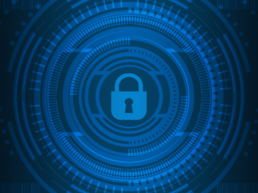INSIGHT
Cyber Threat Intelligence

Cyber Threat Intelligence (CTI) plays a vital role in modern cybersecurity as it provides organizations with crucial insights into potential threats, empowering them to proactively defend themselves against cyber-attacks. Let’s consider a hypothetical scenario where a large financial institution becomes the target of a sophisticated cyber-espionage campaign.
In this scenario, threat actors believed to be state-sponsored actors launch a series of advanced persistent threats (APTs) against the financial institution. These attackers employ zero-day exploits and highly sophisticated malware to infiltrate the organization’s network. The initial intrusion goes undetected, and the attackers stealthily move laterally through the system, evading traditional security measures. Fortunately, the financial institution has invested in a robust CTI program. Their CTI team continuously monitors various sources, such as dark web forums, hacker communities, and threat intelligence feeds. They identify early warning indicators that suggest a potential breach. As a result, the team raises an alert about suspicious activities, enabling the organization’s security operations centre (SOC) to swiftly investigate and respond. Upon investigation, the SOC uncovers evidence of a targeted attack and quickly implements mitigation measures. They isolate affected systems, deploy patches for exploited vulnerabilities, and remove malicious software from their network. The CTI team shares their findings with other financial institutions through trusted information-sharing networks, enhancing collective defence against similar threats.
Threat Intelligence
Threat intelligence is crucial in enhancing cybersecurity defences and making informed decisions to mitigate cyber risks. There are four primary types of threat intelligence that organizations utilize to stay ahead of cyber threats:
Strategic Intelligence: Strategic threat intelligence focuses on the long-term perspective and provides a high-level understanding of the threat landscape. It involves analyzing broader trends, emerging threats, and the motivations and tactics of various threat actors. Strategic intelligence helps organizations develop proactive and comprehensive cybersecurity strategies, allocate resources effectively, and plan for potential future threats.
Tactical Intelligence: Tactical threat intelligence delves into the details of specific threats, such as malware families, exploit techniques, and attack campaigns. It provides actionable information that helps security teams identify and respond to ongoing or imminent threats. Tactical intelligence supports day-to-day security operations, allowing organizations to fine-tune security measures and quickly adapt to changing threats.
Operational Intelligence: Operational threat intelligence is focused on current and immediate threats in real-time or near real-time. It involves monitoring and analyzing security events and incidents, including indicators of compromise (IOCs) and threat actor behaviour. Operational intelligence enables rapid incident response, facilitating the timely containment and remediation of cyber incidents.
There are various ways to implement CTI
Threat Intelligence Feeds: Organizations can subscribe to commercial or open-source threat intelligence feeds that provide up-to-date information on emerging threats, indicators of compromise (IOCs), and tactics used by threat actors.
In-house Threat Intelligence Teams: Larger organizations may establish internal CTI teams, responsible for continuous monitoring, analysis, and threat reporting tailored to the organization’s specific needs.
Managed Security Service Providers (MSSPs): Companies lacking the resources to maintain an in-house CTI team can partner with MSSPs. These providers offer expert CTI services, including threat analysis and incident response support.
Collaborative Information Sharing: Companies can participate in trusted information-sharing communities where industry peers, government agencies, and cybersecurity experts share threat intelligence to strengthen collective defence.
Why Companies Need CTI
Early Threat Detection: CTI enables organizations to detect threats early in their lifecycle, allowing them to respond promptly and minimize potential damages.
Proactive Defense: By understanding the tactics and techniques used by threat actors, companies can proactively implement security measures to thwart potential attacks.
Contextual Understanding: CTI provides contextual information about specific threats, including motivations, targets, and attack methods, aiding in making informed security decisions.
Risk Mitigation: Armed with relevant threat intelligence, organizations can prioritize security efforts, focusing on high-risk areas and critical assets.
Incident Response and Recovery: CTI facilitates rapid incident response by providing actionable insights and enabling organizations to recover more effectively from cyber incidents.
Compliance and Regulatory Requirements: Many industries and jurisdictions have cybersecurity regulations that mandate the use of threat intelligence as part of comprehensive security measures.
Cyber threat intelligence is an indispensable component of modern cybersecurity. CTI can empower organizations to defend against sophisticated threats, the various methods of CTI administration, and the crucial reasons why companies need to embrace CTI to safeguard their digital assets and operations effectively.
For further information, please contact us at info@adili.africa










